In the aftermath of World War II, there was a large shortage of labour in Britain. To address this issue, tens of thousands of black people from the English-speaking Caribbean were invited to Britain to fill labour requirements, ranging from hospital work to transportation services, with the first 492 arriving in 1948 from Jamaica on SS Empire Windrush. Jamaicans made up a rather large number of these immigrants, with some 10,000 arriving in London in 1954 alone, but there were members from a number of other islands, such as Trinidad and Barbados. Many of the newcomers settled in areas familiar to us now, with Brixton being one of the most populous areas for Caribbean immigrants.
Many came full of hope, expecting Britain to offer them a higher standard of living and better education for their children. However, things were not so simple.
Racial tensions were rising. At the time, attitudes towards black people in general were negative and increasingly hostile, coupled with anti-immigration rhetoric claiming that the newcomers were taking jobs which could have been filled by white Britons instead. These sentiments were fuelled by fascist groups such as the Union Movement founded by Sir Oswald Mosley, and the White Defence League (predecessor of the National Front, formerly known as the BNP). Due to the fact that no legislation was in place in the UK which addressed racial discrimination until the first attempt came in the form of the Race Relations Act of 1965, it was common for black Britons to be denied service in areas like hotels and shops and they were subject to unfair pricing with regards to housing.
The end of the 1950s saw the rise of the Teddy Boys, who were gangs of disaffected white people who travelled to black neighbourhoods in Britain solely to terrorise and assault its residents, with the aim to make their lives a living hell, all for the colour of their skin. Tensions reached a boiling point in 1958, when on the 30th August, a white Swedish lady named Majbritt Johnson was assaulted by a gang of white youths. On the previous day, she had been arguing with her husband Raymond, a Jamaican, outside of Latimer Road tube station, and a group of white people attempted to intervene, which resulted in an altercation between them and a number of Raymond’s friends. On the day of Majbritt’s assault, the perpetrators recognised her from the night before, and she was struck in the back with an iron bar, had milk bottles thrown at her, and suffered racial slurs, such as being called a “black man’s trollop.”
It is widely believed that this event sparked the Notting Hill riots of 1958, which stand as the biggest racially motivated period of violence in the country. The clashes between hundreds of people in white gangs and black residents lasted for a number of days, resulting in several cases of bodily harm and widespread damage to homes and local businesses. Members of the black community also began to lose trust in the police in the aftermath of the riots, due to the fact that they believed that no real efforts to heed their complaints of racially aggravated attacks were made; a belief which was confirmed in 2002, when files released by the Metropolitan Police confirmed that, despite the fact that there were indeed eyewitness accounts of white mobs claiming to be out “nigger hunting”, the large disturbances were dismissed by senior officials as only general hooliganism between both white and black Britons, with no possible underlying racist driving force.
The deteriorating race relations in Britain caused Claudia Jones, one of the most iconic black political activists in history, to use the contacts she built up as the founder of the West Indian Gazette, Britain’s first black newspaper, to host the first indoor “Caribbean Carnival” in St Pancras Town Hall on the 31st January 1959 as an attempt to celebrate West Indian culture and to raise spirits of the black community in such a time. It was directed by Edric Connor, and it “featured among other things the Mighty Terror singing the calypso “Carnival at St Pancras”, a Caribbean Carnival Queen beauty contest, the Trinidad All Stars and Hi –fi steel bands dance troupe and a Grand Finale Jump-Up by West Indians who attended the event.” It was televised by the BBC. Two years after Claudia’s passing in 1964, Britain saw its very first Notting Hill Carnival, which started near Ladbroke Grove in 1966.
Sources:
http://www.theguardian.com/commentisfree/2013/oct/15/theresa-may-immigration-bill-racist-landlords
http://www.theguardian.com/uk/2002/aug/24/artsandhumanities.nottinghillcarnival2002
http://www.britishpathe.com/video/shameful-episode-aka-racial-riots/
http://www.thelondonnottinghillcarnival.com/about.html#aboutHistory
https://en.wikipedia.org/wiki/Arrival_of_black_immigrants_in_London
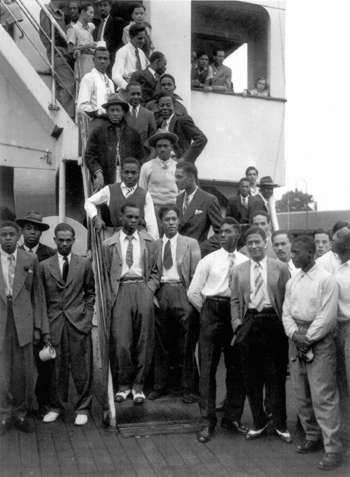
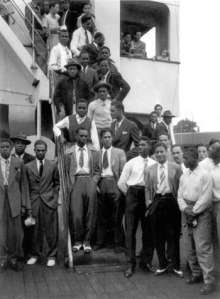
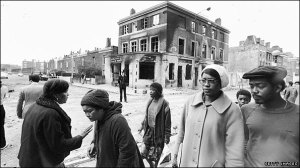
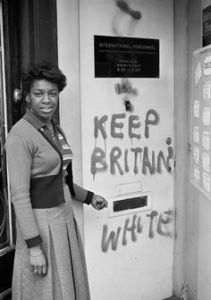
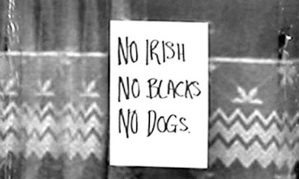
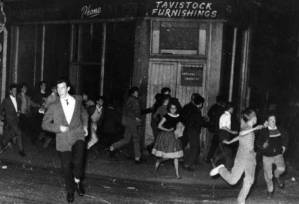
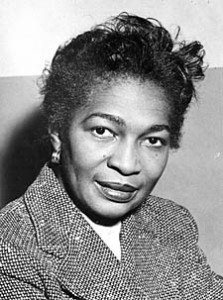
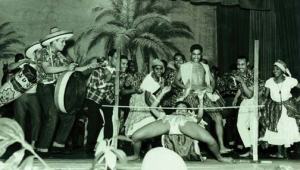
4 thoughts on “Black British History – Rising racial tensions in 1950s Britain and the birth of Notting Hill Carnival”